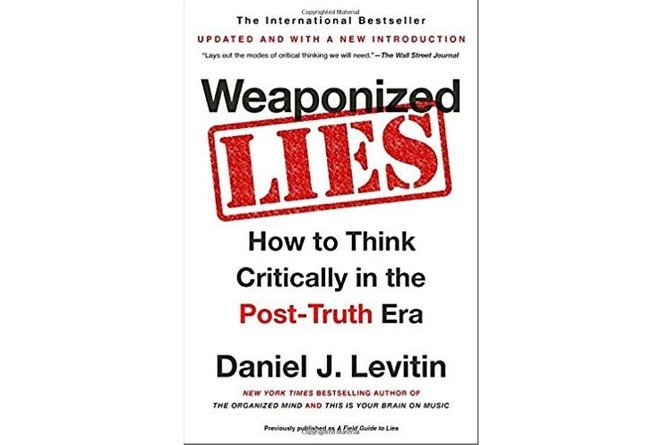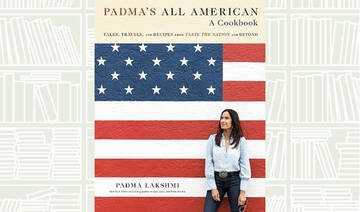The term “fake news” was chosen as the phrase of the year in 2017 by Collins Dictionary. False stories that appear to be true have helped to undermine society’s trust in news reporting.
On Jan. 10, President Emmanuel Macron announced that France would be the first country to shut down alleged fake news websites and social media accounts if they were suspected of interfering with democratic elections.
Dishonest outlets should not be allowed to influence public opinion. But people need to be trained to become critical thinkers. A Stanford University study tested 7,800 students for 18 months and discovered that young people are unable to recognize high-quality news from lies.
Lies have become weapons and they are difficult to detect. “Misinformation is devilishly entwined on the Internet with real information, making the two difficult to separate,” says Daniel Levitin, a neuroscientist, cognitive psychologist and bestselling author.
Misinformation passes from one person to another through a range of social media and spreads around the world. However, governments and powerful individuals have used disinformation to serve their own interests for millennia.
This book shows us, on one hand, how to detect problems with data we encounter on the Internet and, on the other, gives us the tools to think critically, evaluate facts and reach evidence-based conclusions. Students are reading increasingly less. Consequently, “children are not developing good learning habits, they’re not interested in bettering themselves, and they are not intellectually engaged,” writes Levitin.
Most of what we know was either told to us or we read about it. In other words we rely on people with expertise. We should analyze the claims we encounter the same way we analyze statistics and graphs. This is taught in law and journalism schools, and sometimes in business schools and graduate science programs, but rarely to those who need it most.
To reach the truth can be quite an ordeal and the human brain often makes decisions based on emotional considerations. “Even the smartest of us can be fooled. Steve Jobs delayed treatment for his pancreatic cancer while he followed the advice (given in books and websites) that a change in diet could provide a cure. By the time he realized the diet wasn’t working the cancer had progressed too far to be treated,” writes Levitin.
Another important factor is to be able to evaluate the reputation and trustworthiness of experts. So many financial authorities make the wrong predictions, while novices or amateurs turn out to be right.
Some sources are more reliable than others: peer-reviewed articles are more accurate than books, and books by major publishers are more reputable than self-published works. Award-winning newspapers such as The New York Times, The Washington Post and The Wall Street Journal gained their reputations by striving to be constantly truthful in their news coverage. These outlets maintain their standards on their websites. The same cannot be said of some other websites, which fail to live up to the same standards.
Another form of misrepresenting the truth is “counterknowledge”, a term coined by Damian Thompson, a British journalist, referring to misinformation packaged to resemble real facts. Examples are claims that the Moon landings and 9/11 terror attacks in the United States never took place. Merely asking the question “What if it is true” helps the fake news to spread.
In the final section of the book, Levitin tackles scientific thinking and “that includes seeing how, with our imperfect human brains, even the most rigorous thinkers can fool themselves”.
Some researchers make up data. They often get away with it because their peers are not on their guard. A case of fraud was discovered in 2015 when Dong-Pyou Han, a former biomedical scientist at Iowa State University, was found guilty of fabricating and falsifying data about a potential vaccine. He lost his job at the university and was sentenced to almost five years in prison.
The idea that the measles, mumps and rubella (MMR) vaccine may cause autism was propagated by Andrew Wakefield in an article with falsified data that has now been retracted and yet, even now, millions of people continue to believe the link.
The Internet is a powerful democratizing force that allows everyone to express their opinion and enjoy instant access to the world’s information. But critical thinking and updating our knowledge are needed as new information come in.
“We’re far better off knowing a moderate number of things with certainty than many things that might not be so. True knowledge simplifies our lives, helping us to make choices that increase our happiness and save time,” says Levitin.
“Weaponized Lies” warns us about the logical fallacies, the insidious lies and fake news found on the Internet. It also gives us a set of intellectual tools to uncover inaccurate data, deceptive information, fallacious reports and, finally, differentiate between the real, the unreal and even the surreal.
Book Review: Re-thinking strategy in the fight against fake news
Book Review: Re-thinking strategy in the fight against fake news

Book Review: ‘Keep the Memories, Lose the Stuff’

If you are someone who adopts a new year, new me mindset every Dec. 31, then Matt Paxton’s 2022 book “Keep the Memories, Lose the Stuff: Declutter, Downsize, and Move Forward with Your Life,” written with Jordan Michael Smith, is worth picking up.
In the process of reading it, I found myself filling four bags with items to donate.
Paxton’s approach is notably different from Marie Kondo’s once-ubiquitous Japanese tidying method, which asks readers to pile all their possessions into one part of the room, hold each item up and ask whether it sparks joy.
While Kondo’s philosophy sounds appealing on paper — thanking objects and dedicating an entire weekend to the process — it is not realistic for everyday life. Paxton’s method feels more practical and gentler.
Paxton knows the emotional terrain of clutter well. For more than 20 years he has helped people declutter and downsize. He was a featured cleaner on the reality show “Hoarders” and later hosted the Emmy-nominated “Legacy List with Matt Paxton” on PBS.
Through this work, Paxton gained insight into why people hold on to things and what makes letting go difficult even of what seemingly looks useless.
What works especially well is how personal the book feels from the outset.
He opens by explaining his anxiety-inducing decision to move to a different US state with his three children, and all of their stuff, to live with his new wife and all of her stuff.
Together, they would be raising seven children — very Brady Bunch style — but with slightly more practical life considerations.
He also talks about how he got into this line of work. When he was in his 20s, his father died and he had to help clear out his belongings. He found that process to be cathartic and special. And he was good at it.
Soon after, short on cash, he accepted a job from someone in his small, close-knit community to help organize her home — likely hired out of pity more than anything else.
That slow process of sifting through items and learning the stories behind each one — directly from the owner of those objects — sparked plenty of joy. He was hooked.
Throughout the book, Paxton makes the case for consistency. His advice is manageable. He encourages readers to dedicate just 10 minutes a day to decluttering to form a habit. We all can spare that.
Paxton also stresses the importance of communication.
Talk to your loved ones about what you want done with your belongings when you are no longer around, and just as importantly, listen to what they want done with theirs, he urges. He offers practical guidance on having these conversations with parents, partners and children.
One critique of this book is that Paxton dedicates a large portion to physical photographs. While this is relevant for many older readers, it may feel less urgent going forward, particularly for Gen Z and younger, whose clutter is more likely to be solely digital.
Ultimately, “Keep the Memories, Lose the Stuff” is less about getting rid of things than about making space; by speaking about objects, sharing their stories and allowing them — and each of us — to move on.














